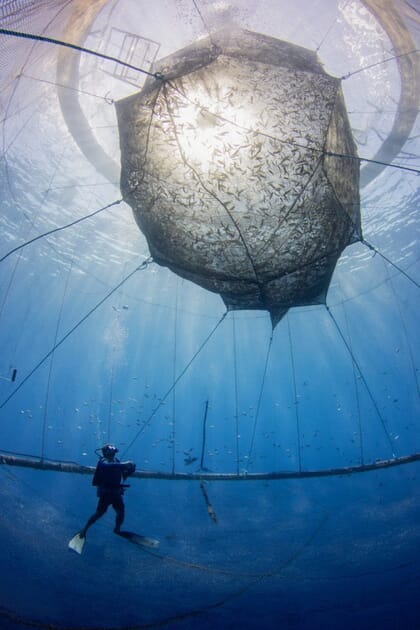
© Jeffrey Milisen
NOAA previously identified these regions for their potential to host sustainable commercial aquaculture development in the United States. Areas in the Atlases will have characteristics expected to support multiple types of aquaculture industries including finfish, shellfish, seaweed, or some combination.
“The aquaculture Atlases apply the latest ocean data and information to advance sustainable business development,” said Gina M Raimondo, US Secretary of Commerce. “This will help us continue to sustainably support the blue economy, which provides clear benefits for our country, our economy and the planet.”
“These are the most advanced spatial analyses ever performed for any US ocean regions,” said Nicole LeBoeuf, assistant administrator of NOAA’s National Ocean Service. “The Atlases are powerful scientific tools that will help advance food security for all Americans and improve sustainable food production, which is critical for the economic and environmental resilience of our coastal communities.”
NOAA’s National Centers for Coastal Ocean Science developed each Atlas using more than 200 data layers accounting for key environmental, economic, social, and cultural considerations, including fishing interests and marine protected areas. The studies identified nine areas in the Gulf of Mexico and 10 areas in the Southern California Bight that may be suitable for aquaculture, while also reducing conflicts with other ocean uses.
While informed by the Atlases and other relevant information, the decision to identify an AOA will only be made after completion of the National Environmental Policy Act Programmatic Environmental Impact Statement, which will assess the impacts of siting aquaculture facilities in different potential locations. Proposed aquaculture development must go through the appropriate permitting process. Though the information delivered in these Atlases is tailored to inform the AOA selection process, the method used to conduct these analyses could also benefit other ocean planning and coastal management.
“Aquaculture Opportunity Areas will foster development of U.S. aquaculture as a needed complement to our wild capture fisheries resources,” said Janet Coit, assistant administrator for NOAA Fisheries. “Using a combination of scientific analysis, aquaculture opportunity Atlases, and public engagement, NOAA is identifying defined geographic areas that are environmentally, socially, and economically appropriate for commercial aquaculture.”
NOAA will continue to work with Regional Fishery Management Councils, Marine Fisheries Commissions, states, tribes and other stakeholders to identify areas to be considered in further depth for sustainable aquaculture. Public input is vital to shaping an open and transparent AOA process.




